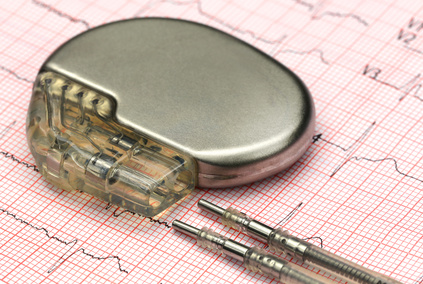This new consensus published this week in J Am Coll Cardiol has provided us with an algorithm to manage conduction disturbances after transcatheter aortic valve replacement. This consensus is intended to reduce potential deaths caused by conduction disturbances and, at the same time, reduce unnecessary definite pacemaker implantation.

This document is a big step ahead in providing guidelines for these patients, who have been treated arbitrarily, with disparity between randomized studies and the daily practice.
The document was drafted by a multidisciplinary group of interventional cardiologists, electrophysiologists and surgeons.
It first classifies potential conduction disturbances into 5 groups:
Intra-procedural recommendations include continued monitoring, vein access with temporary pacemaker, no predilation if possible, considering the type of valve with the lowest risk of conduction disturbances and minimizing implantation depth.
For group 1, temporary pacemaker could be removed immediately after procedure and 24-hour monitoring should suffice. If there are no new developments at ECG after 24 hrs., patients can be discharged.
Group 2 should keep the temporary pacemaker for at least 24 hrs., and patients can be discharged after additional 24-hour monitoring.
For high degree blocks and complete blocks, a definite pacemaker is required, but any new development in EKG after 2-day monitoring reclassifies patient in group 3.
Read also: ESC 2019 | THEMIS-PCI: Unlike in the Main Study, Here Ticagrelor Is Indeed Effective.
Temporary pacemakers should be kept for 24 hrs. in group 3; if ECG shows baseline values or shows no new developments after 24-hr continued monitoring, patients can be discharged. Should there be any developments, temporary pacemaker is to be kept additional 24 hrs. Bear in mind these patients, whose ECG continues to evolve the first 48 hrs., are at high risk of complete block, and therefore require aggressive management.
In groups 4 and 5, temporary pacemaker should be kept 24 hrs. followed by additional 24 hrs. of continued monitoring should the block be resolved.
A new left bundle branch block with very wide QRS or with further developments to the new left bundle branch block determines these patients are at high risk of complete heart block, and therefore require aggressive management.
Aggressive management vary from expert to expert, from discharge with ambulatory monitoring to prophylactic implantation of definite pacemaker. An intermediate algorithm could guide the need of definite pacemaker with an electrophysiology study.
Read also: ESC 2019 | THEMIS: Ticagrelor in Diabetics with Stable Coronary Artery Disease.
Many experts consider it is hard to set general guidelines when there are so many variables involved, such as patient anatomy, operator experience and kind of valve. However, this document is all we have, for now.
Original Title: Management of conduction disturbances associated with transcatheter aortic valve replacement: JACC scientific expert panel.
Reference: Rodés-Cabau J et al. J Am Coll Cardiol. 2019;74:1086-1106.
Subscribe to our weekly newsletter
Get the latest scientific articles on interventional cardiology
We are interested in your opinion. Please, leave your comments, thoughts, questions, etc., below. They will be most welcome.





